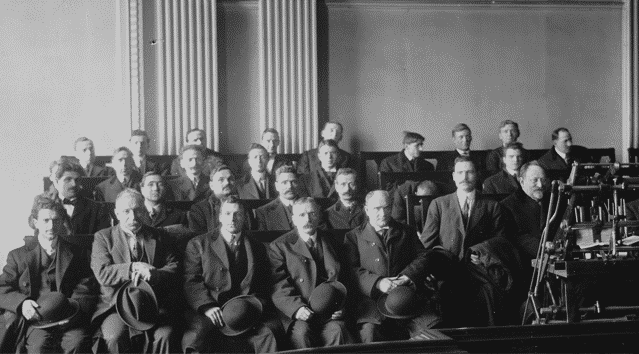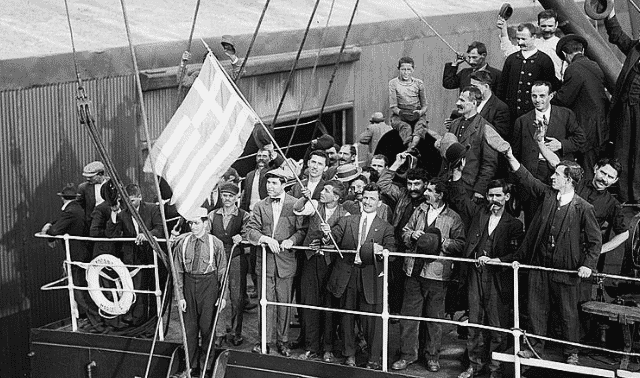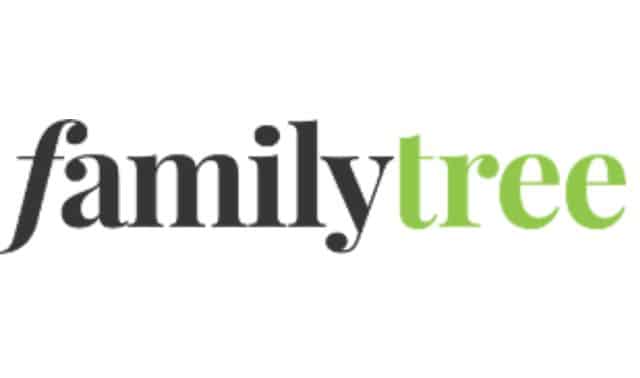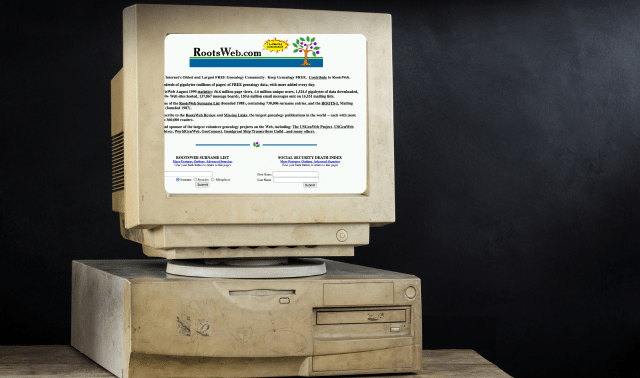
Nothing in genealogy quite matches the emotional thrill of finding the record of an ancestor’s arrival in America. Seeing in black and white the details of your family’s immigrant journey gives you a priceless glimpse into their hardships and hopes as they left everything and everyone familiar behind to build a new life in a strange place.
Not so long ago, locating immigration records required a trip to a major repository such as the National Archives in Washington, D.C., or at least borrowing microfilm from the archives or the Family History Library. But today your first step to finding passenger lists and other immigration records is to go online, where you can do sophisticated searches to uncover name variants and mistranscriptions. Many of those records are just a few screen taps or mouse clicks away.
Here we round up 14 of the most useful websites for tracing immigrant ancestors, with helpful tips for searching each one.
1. Statue of Liberty–Ellis Island Foundation
When the passenger records of Ellis Island, the famous gateway to America through the port of New York City, first went online in 2001, the public’s genealogical interest was galvanized like nothing since the airing of “Roots” in 1977. Now at an updated web address and numbering 51 million New York passenger records from Ellis Island’s opening in 1892 up to 1957, the site remains an essential starting place for immigration research. It also includes records of travelers who lived in America, returning from European vacations or visits to the old country.
Searching the passenger lists is simple, with a one-page search form or an assist from a “wizard.” Either approach gives you the same options. If you register for a free account on the site, you even can save previous searches to rerun or tweak. Checkmark choices let you try various levels of spelling matching for names. Sliders under the Wizard option make it easy to narrow your searches by year of birth, current age, age at arrival, and year/month/day of arrival. Don’t miss the plus sign that lets you select ethnicity from a long scrolling list (“Afghan” to “Zulu”).
Be cautious, though, about filling in too much information at the start of your search. Try just a surname and initial, possibly with an arrival range. You can always filter your results if the hits are overwhelming. Not every record contains information for every filter option—birth year or marital status, for example—and specifying these can omit passengers whose records lack information for these fields.
2. Castle Garden
Researchers who assume their immigrant ancestors arrived through Ellis Island are often disappointed by results at that site—because more than 8 million people, especially from northern Europe, arrived in New York before that famous gateway opened. From 1855 to 1892, they were processed through Ellis Island’s predecessor, Castle Garden, and you can search for them at this website.
You won’t find images of the actual records here—just transcribed information—and the search is more bare-bones than at the Ellis Island site. Options are ship name, port of departure, first and last name, occupation, country/province/place of last residence, and date of arrival (range by year). As with Ellis Island searches, it’s best to start by casting a wide net. In these early records especially, transcription errors and omissions are rampant. You won’t hurt your hits, however, by including filters not indexed in a particular record set: Searching for Ireland as place of last residence, for example, still gets results from years that list “unknown” in that field.
For best results, make frequent and strategic use of the asterisk as a wildcard. First-name searches for *anna, for example, retrieve not only Anna, but also Hanna and Johanna, and John* finds Johnson as well as Johns. You can even try multiple wildcards (*anna*). There’s no built-in way to refine your search, but sometimes the back button keeps you from having to re-enter everything.
3. Boston Passenger Manifests
Though not yet complete, this collection from the Massachusetts Archives Division aims to cover all the 1 million passengers who arrived through the port of Boston from January 1848 to July 1891. Registers may include the immigrant’s name, age, sex, occupation, country of birth, last residence and passenger list number; and the name of the ship and date of its arrival in Boston.
You can search for the first and last name and the ship’s name using “Begins with,” “Exact match” or “Contains anywhere” for your search terms. Other fields let you specify a date range to search (use the mm-dd-yyyy format).
4. Galveston Immigration Database
This resource from Galveston Historic Seaport covers more than 130,000 passengers who arrived at the port of Galveston from 1846 to 1948. Entries include names of passengers, age, gender, occupation, country of origin, ship name, dates of departure and arrival, and destination in the United States. Details on some ships are also included. Searches are by surname, arrival year and ship name. Results give a table of all matching last names, including surnames that contain the name you searched for.
5. Library and Archives Canada
Americans might assume their ancestors came to US shores, but don’t overlook the possibility they arrived in Canada and traveled overland. In such cases, the Library and Archives Canada’s databases and digitized records can help. The most comprehensive resource is a combined database of 4.8 million passengers from six Canadian ports covering 1865 to 1922, searchable by surname, given name, ship, year of arrival and arrival date (formatted as year-month-date). Clicking on each result brings up a transcription and image of the page.
A separate database covers some 78,000 ship arrivals—not names of individual passengers—and is linked to digitized passenger lists. This can be useful for finding fellow travelers or if transcription oddities frustrate your name search.
Wildcards don’t work here, so you’ll need to search for name variants. But the search does find results that match just the first part of what you’ve entered: Jonas, for example, also will retrieve Jonassen and Jonasson.
6. National Archives and Records Administration
Though most of NARA’s immigration records are actually on other genealogy sites, the archives’ Access to Archival Databases does have searchable databases of 607,000 arrivals in the port of New York from 1846 to 1851, plus the US Germans to America Index (1850–1897), Italians to America (1855–1900) and Russians to America (1834–1897).
This site’s even greater value, though, is in helping you get you up to speed on finding and using immigration records. You can search the microfilm catalog with passenger as the keyword to see which arrival ports and years are preserved on microfilm (these films are the source of the digitized passenger records and indexes on the sites we’re recommending here).
Click on Digitized by Our Partners to see a complete list of NARA records, immigration and otherwise, that are available at sites such as Ancestry.com and FamilySearch (see below). It’s a quick way to see what you can find online, and where. Use your browser’s “Find” command to jump to terms like “passenger.” Note that most of these databases are free at Ancestry.com even if you’re not a subscriber.
7. FamilySearch
The Family History Library’s intensive digitization project, replacing its long-standing microfilm-rental program, has meant an online bonanza for immigration researchers, with more than 200 related databases available for free at FamilySearch. (See the full list.) Not all are yet searchable, meaning you may have to browse a collection for your ancestors.
Among the most extensive searchable resources for US arrivals are lists and indexes for the ports of San Francisco (1893–1953), Honolulu (1900–1953), New Orleans (1820–1945), Baltimore (1820–1948), Boston (multiple collections span 1820 to 1943), New York (multiple, 1820–1942, plus Ellis Island) and Philadelphia (1883–1948). You also can search border crossings from Canada (1895–1956 plus the “St. Albans lists” for 1895 to 1954) and Mexico (1903–1957); NARA’s indexes of German, Italian and Russian arrivals; as well as many smaller collections.
While you can search all the collections at once from the main search page, each is slightly different and may reward separate searches. To do this, from the aforementioned database listing, click a collection title. FamilySearch does a pretty good job of delivering spelling variations, but it sometimes pays to play around: Ingels, for example, retrieves Engelstone but not Inglehearn, which a surname search for Ingelson does capture. As in most of these sites, start with a minimal search—such as only a surname and birth range—and filter more tightly only if the results prove overwhelming.
8. Ancestry.com
This supersized subscription site serves up more than 500 immigration-related collections spanning the globe. For US arrivals, many are the same as or similar to those found on FamilySearch, such as for New York and other ports and border crossings. But you’ll also find on Ancestry.com a must-search index for those with pre-1820s immigrants: “US and Canada, Passenger and Immigration Lists Index, 1500s–1900s.” If your early-arriving ancestors landed in New England, check collection called “The Great Migration and the Great Migration Begins (1620–1635).”
Other databases focus on emigration, including “UK Outward Passenger Lists (1890–1960),” “Hamburg Passenger Lists (1850–1934)” and two collections of Swedish emigration records—the essential “Emigranten Populär (1783–1951)” and “Gothenburg, Sweden, Passenger Lists, 1869–1951,” both in Swedish.
Ancestry.com allows both a question-mark wildcard (?) to take the place of a single letter, and an asterisk (*), representing zero to five characters. You can even search most databases without a surname—or with no name at all—if, say, you know an arrival date but your immigrant ancestor’s name has changed or was mistranscribed.
9. MyHeritage
This subscription site’s record collections offer more than 50 immigration collections. Among the most extensive are the Passenger and Immigration Index (the same collection is on Ancestry.com) and collections focused on German, Irish, Italian and Russian immigrants to the United States. Your search can also include more than 1.3 million entries from the Immigrant Ships Transcribers Guild site.
Although you can search all these databases at once, note that your search options change when you explore them individually. Those options depend what information is in the record. Some databases, for example, add birth year, ship name and place of origin. MyHeritage will also let you save your searches and emails you if new results pop up.
10. Findmypast
This subscription site has expanded far beyond its UK focus, and now includes a raft of immigration records. In addition to “Passenger Lists Leaving UK (1890–1960),” you’ll find NARA’s German, Italian and Russian indexes, passenger lists from most major US ports and some smaller ones, and even “Shipwrecked Passengers To America (1817–1875).”
You can search the entire Immigration & Travel category as well as the Passenger Lists subcategory. The ability to search individual collections—which may reveal different filter options—isn’t immediately obvious, but an alphabetical list of all databases is available here. Click the Category column header to sort by category name. Here, the category is called Travel & Migration, so use the fast-forward button (») to jump to about screen 128.
Findmypast supports two wildcards for searching: the question mark for one character and asterisk for any number of characters including zero. You even can use wildcards in non-name fields, such as for names of ship or ports.
11. Digital Danish Emigration Archives
Some places our ancestors emigrated from have contributed to the online genealogy records boom. If your family happened to come from Denmark, for example, you’re really in luck: This site serves up nearly 400,000 names of emigrants whose departures were tracked by the Copenhagen Police from 1869 through 1908. The data from 90 thick volumes include name, occupation, age, last residence, parish, county, destination (city, state, country), and ticket contract number or date of registration—all searchable fields. Results also give the place of birth (beginning in 1899), family status, name of the emigration agent and name of the ship. You can find both direct emigration from Copenhagen to the destination, and indirect, with a stop in another port.
Enter names in the search field formatted as surname, first name, such as Hansen, Anton. Wildcards aren’t supported, so you’ll need to use your imagination for alternate spellings. You can, however, type only the first few letters of a first name, so Hansen, An returns Anders, Anton and Ann Hansen.
12. Migration Institute of Finland
Find your Finnish ancestors in the institute’s collection of 750,000 records, including passenger lists and passports. A basic search is free, but full access requires a subscription at about $34 annually. Depending on the database, you’ll learn:
- last residence in Finland
- profession
- family members and travel companions
- name and sailing date of the ship
- destination
13. Digital Archives of Norway (Digitalarkivet)
Easily overlooked in this rich, entirely free resource database—notable for its census, property and parish records—are more than 160 collections of Norwegian emigration records. To find them, look under Category and select Emigration Records, then choose one of the subcategories in the dropdown menu (or choose Select All). Then click the Search button. Many collections are browse-only, such as passport registers, passenger lists and more. Others, such as Emigrants from Bergen (1874–1930) and Emigrants from Oslo (1867–1930), are searchable and fully transcribed.
Although searchable databases present a long list of filters, start by entering only the basics—such as a surname—and then scrolling the results. The search is unforgiving when it comes to spelling differences or partial names: S Erickson or Sophia Erickson, for example, won’t find Sofie Erickson. But you can use an asterisk wildcard, or even multiple asterisks, each of which stands for any number of characters: *risto* finds Kristoffer as well as Christoffer.
14. Emigration from Oldenburg
If your German ancestors came from the Duchy of Oldenburg area, search for them in this collection from the local genealogical society. Be aware that, in addition to emigrants, you may also find their relatives who didn’t emigrate—and it may take some homework to figure out which is which, as the records are in trees rather than passenger lists.
You can do a simple name search from the main page, or click Advanced Search to add fields for birth, christening, death and burial places and years, as well as spouse’s surname. You also can browse an alphabetical list of names in the database, helpful when searching for variants.
Related Reads
A version of this article appeared in the March/April 2018 issue of Family Tree Magazine. Last updated, January 2022.









